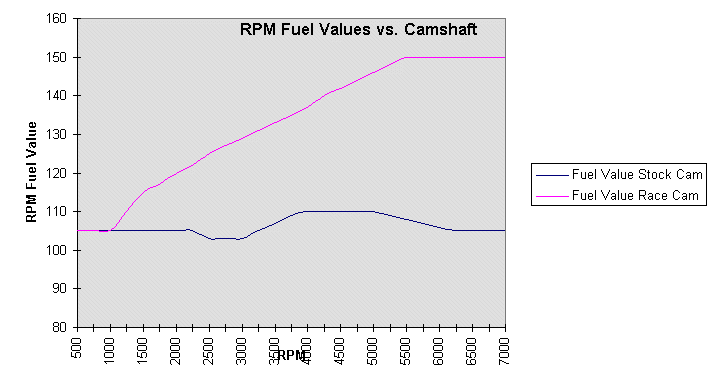


Some readers have asked how programming differs between an engine with stock cams and one with hotter race cams. When using a MAP sensor for load sensing, most engines with stock cams idle between 17 and 21 inches of vacuum. MAP values usually progress in a fairly linear fashion in this case. When a cam is fitted with more overlap and duration, idle vacuum falls off into the 8 to 15 inch range. This is not a problem in itself. The problem comes in when the engine is revved up in the 1250 to 2000 rpm range. Under no load or light load conditions the engine builds more vacuum. With linear MAP progression values the system supplies less fuel instead of more as the engine requires so you get a lean spot just off idle. To compensate for this, the RPM FUEL values need to be increased just above the idle rpm range as seen below.

The second difference is of course the increased airflow rates provided by the hotter cam. The higher the airflow, the higher the fuel flow must be to keep the air/fuel ratios correct. Notice that the values on the race curve ramp up more steeply and peak at a higher rpm than with the stock cam which is really quite linear. These curves are theoretical only to illustrate the differences so don't take them as something to apply to your engine.
Finally, on naturally aspirated engines with really hot cams, individual throttle plates and/or small intake plenum volumes, you may be better off using TP load sensing instead of a MAP sensor. The MAP sensor does not deliver a good signal to the ECU when the pressure fluctuations inside the plenum or ports are too intense plus if your engine only pulls 6 inches of idle vacuum, you are only using about 1/4 of the range of the sensor and only have maybe 16 points available for programming. TP sensing in this case will work better and programming will be easier and less time consuming.